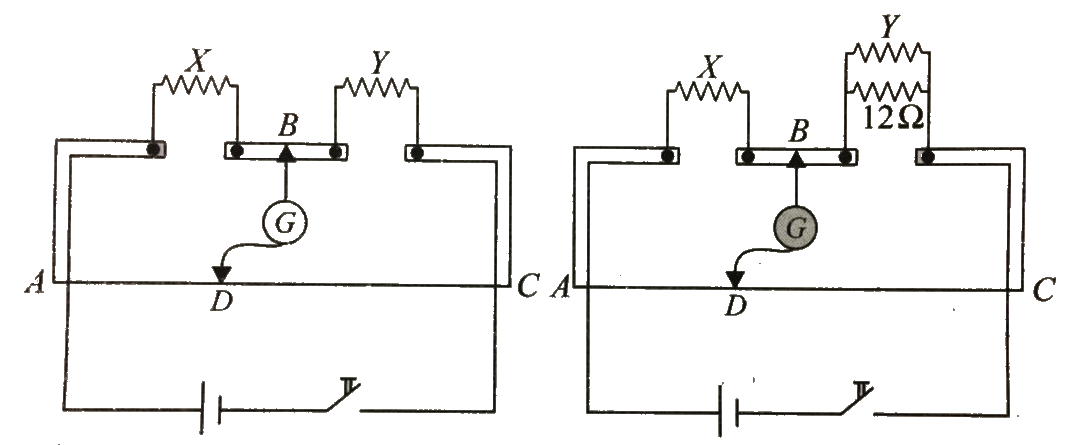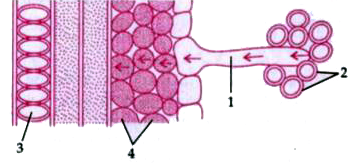After crossing two plants, the progenies are found to be male sterile. The phrnomenon is found to be maternally inherited and is due to some genes which reside in
nucleus
chloroplast
mitochondria
cytoplasm
The correct Answer is:C
Step-by-Step Solution:
1. Understanding the Problem: The question states that after crossing two plants, the progenies are male sterile. This means that the offspring do not produce functional male gametes (pollen grains).
2. Identifying the Inheritance Pattern: The problem specifies that this male sterility is maternally inherited. This suggests that the trait is passed down from the mother plant to the progeny, which is not typical of Mendelian inheritance.
3. Recognizing the Type of Inheritance: The phenomenon described is indicative of cytoplasmic inheritance. Unlike Mendelian inheritance, which involves nuclear genes, cytoplasmic inheritance involves genes located in the cytoplasm of the cell.
4. Locating the Genes Responsible: In plants, the cytoplasm contains organelles such as mitochondria and chloroplasts, which harbor extra-nuclear DNA. The genes responsible for male sterility in this case are likely located in these organelles.
5. Conclusion: Therefore, the answer to the question is that the male sterility observed in the progeny is due to genes that reside in the mitochondria and chloroplasts, indicating a case of cytoplasmic inheritance.
Final Answer: The phenomenon is due to genes that reside in the mitochondria and chloroplasts, indicating cytoplasmic inheritance.
---
Similar Questions
Figure 6.32 shows a meter bridge in the (which is nothing but a particle wheastone bridge), consisting of two resistors X and Y together in parellel with a meter long constantan wire of uniform cross section.

with the help of a movable contact d, one can change the ratio of resistance of the two segments of the wire until a sensitive galvanometer G connected across b and D shows no deflection. The null point is found to be at a distance of 33.7cm. The resistor Y is shunted by a resistance of 12Ω, and the null point is found to shift by a distance of 18.2cm. Determine the resistance of X and Y.View SolutionTwo pea plants were subjected cross pollination. Of the 183 plants produced in the next generation, 94 plants were found to be tall and 89 plants were found to be dwarf. The genotypes of the two parental plants are likely to be:
View Solution
Knowledge Check
- Question 1 - Select One
Read the passage given below, and answer the questions that follow:
Some students wanted to investigate the pattern of inheritance of flower colour in snapdragon. They selected some plants which were homozygous for red flowers and some other plants which were homozygous for white flowers. These plants were labelled as Parental Plants (P1). These plants (red-flowered and white flowered), were cross-pollinated. The seeds obtained from these plants were planted in a separate field. These seeds germinated to produce the plants which were labelled as the plants of F1-generation.
Based on the above experiment, answer the following questions:
This type of inheritance can be described as:APolygenic inheritanceBIncomplete dominanceCCo-dominanceDPleiotropism - Question 2 - Select One
Read the passage given below, and answer the questions that follow:
Some students wanted to investigate the pattern of inheritance of flower colour in snapdragon. They selected some plants which were homozygous for red flowers and some other plants which were homozygous for white flowers. These plants were labelled as Parental Plants (P1). These plants (red-flowered and white flowered), were cross-pollinated. The seeds obtained from these plants were planted in a separate field. These seeds germinated to produce the plants which were labelled as the plants of F1-generation.
Based on the above experiment, answer the following questions:
Select the statement which correctly predicts the phenotype of the plants of F1 generation.AAll the plants will bear red flowersBAll the plants will bear white flowersC50% plants will bear red flowers and 50% will bear white flowersD100% plants will bear pink flowers.
A true breeding tall plant is crossed with a true breeding dwarf plant. F1 progeny is 100% tall and F2 has tall: dwarf in the ratio 3: 1.
Name the patterns of inheritance in which the ratio deviates from the above. Also, mention the deviated phenotypic ratio.View SolutionA projectile is projected with some initial velocity and some initial angle of projection. A wind is also blowing, due to which constant horizontal retardation a is imparted to the particle in the plane of motion. It is found that, the particle is at same height at two different time t1 & t2 and particle is at same horizontal distance at two different time t3 & t4
Angle of projection of particle is :-View SolutionThe potential energy function of a particle due to some gravitational field is given by U=6x+4y. The mass of the particle is 1kg and no other force is acting on the particle. The particle was initially at rest at a point (6,8). Then the time (in sec). after which this particle is going to cross the 'x' axis would be:
View SolutionDespite high level of heterozygosity, the progeny derived from a seed of cross pollinated plant was found to be completely uniform. One reason can be
View SolutionOther than pea plants it was found that sometimes the F1 had phenotype that did not resemble either of the two parents and was in between the two. It is due to
View SolutionThe figure given below is a diagrammatic representation of a part of the cross section of the root in the root hair zone. Study the same and then answer the questions that follow :

Due to an excess of this pressure sometimes drops of water are found along the leaf margins of some plants especially in the early mornings. What is the phenomenon called ?View Solution

